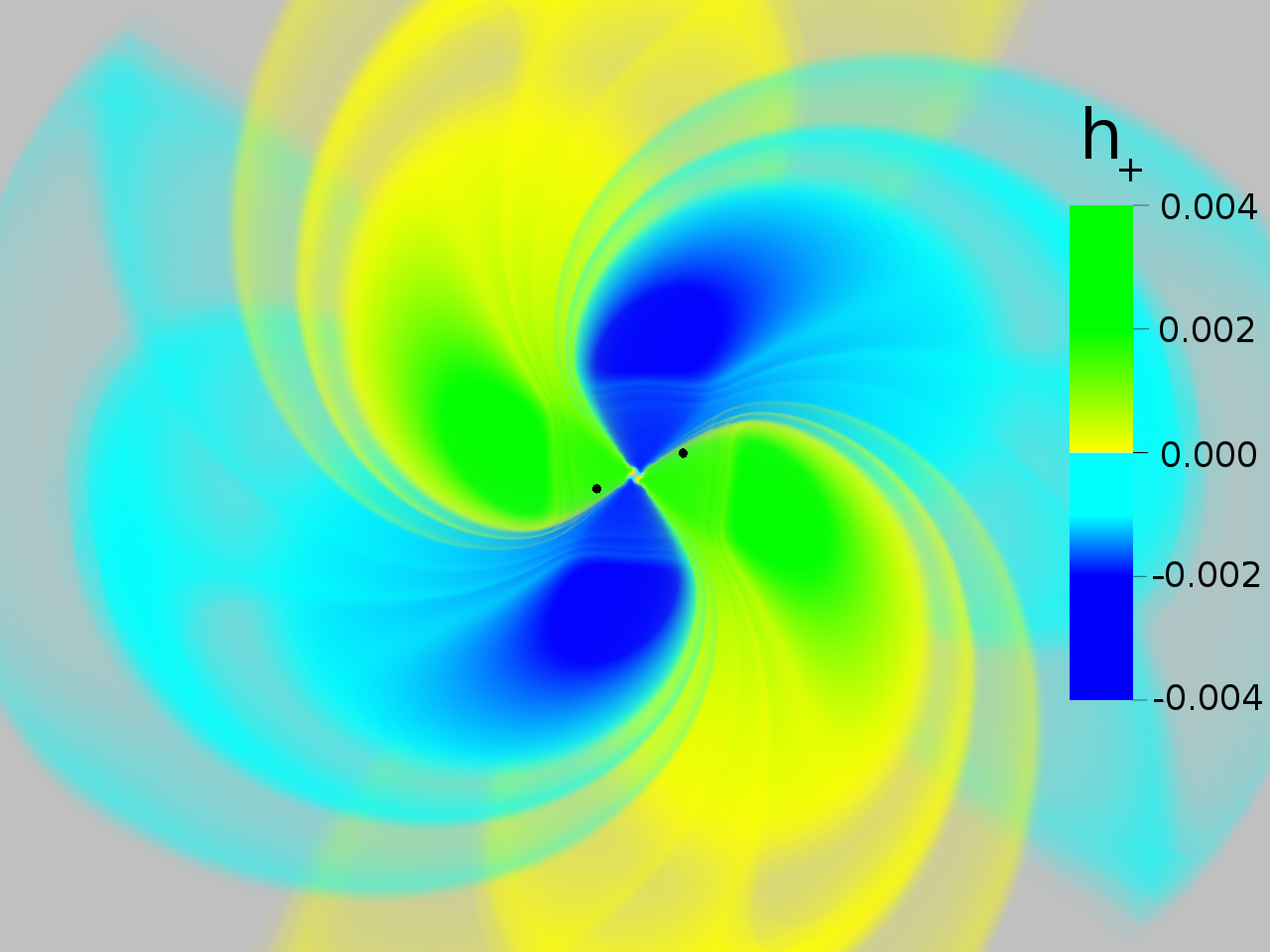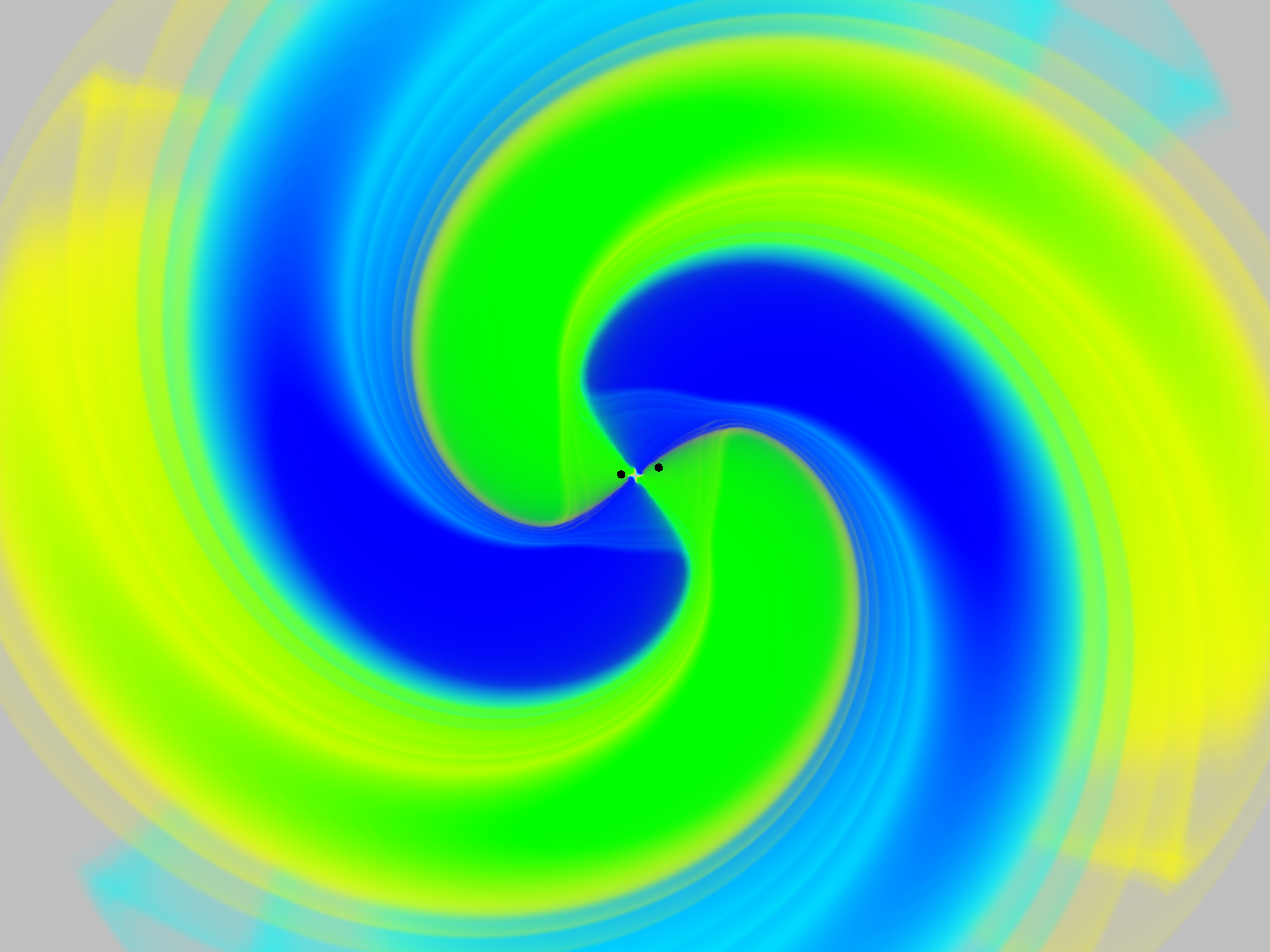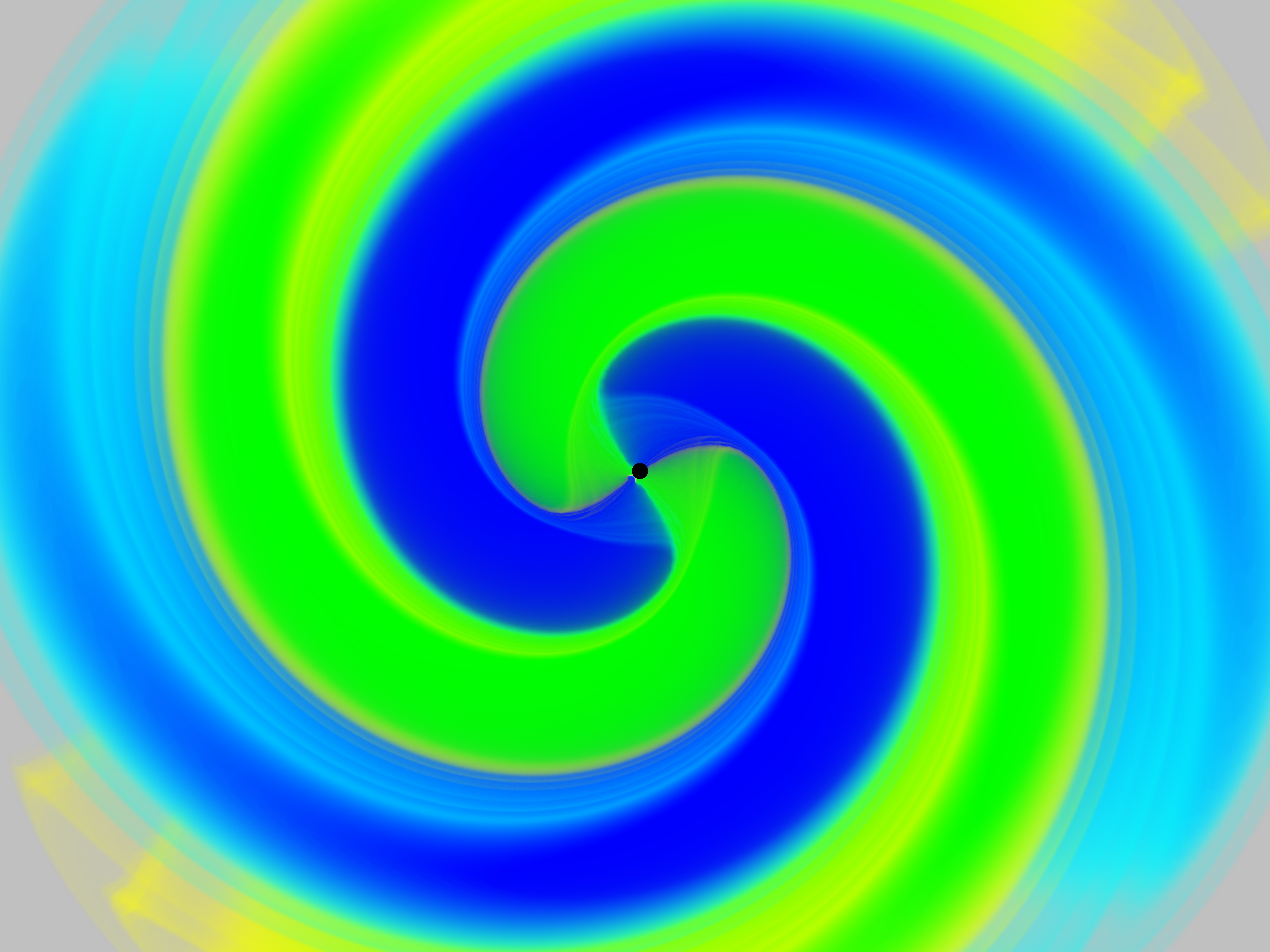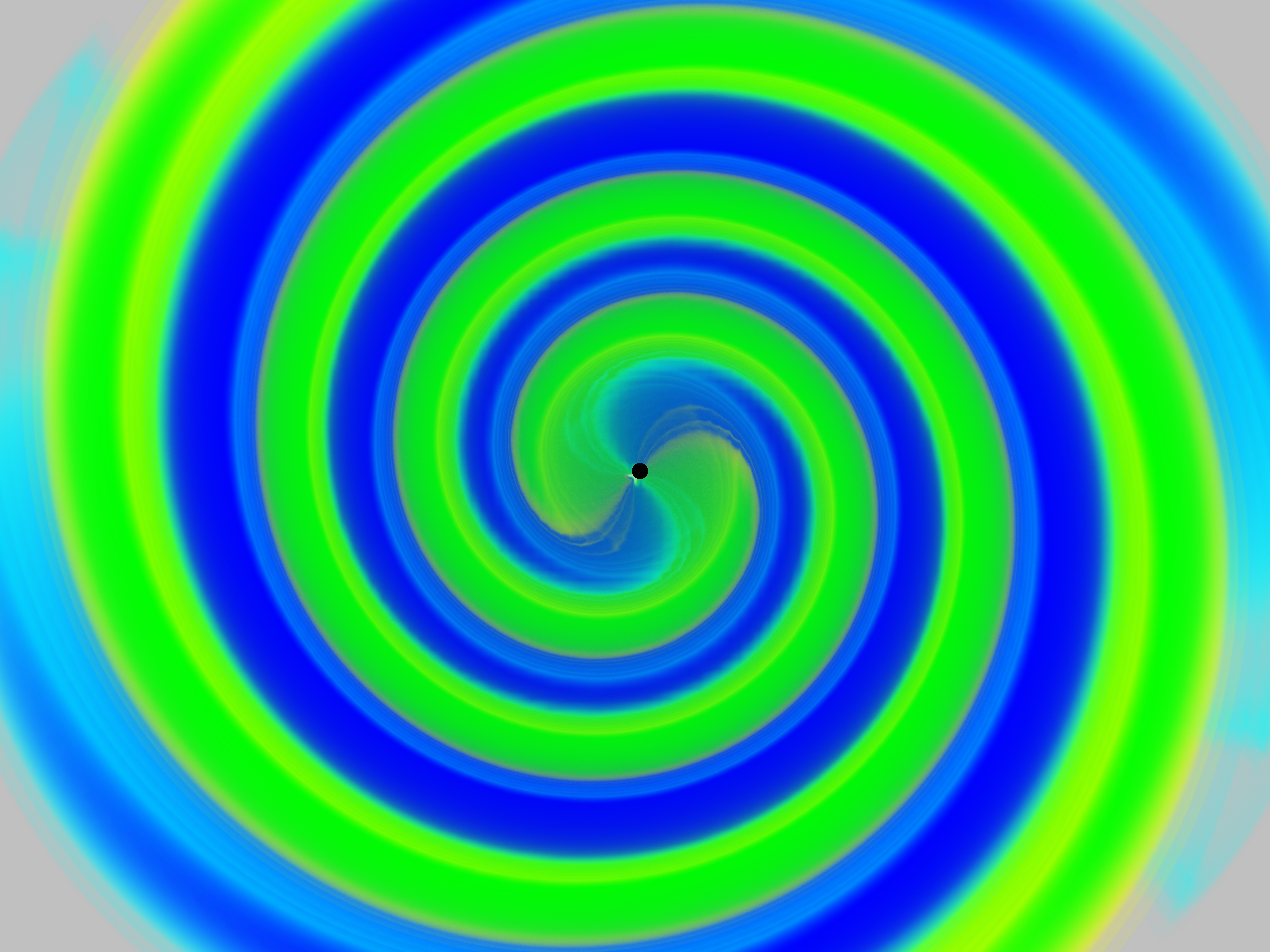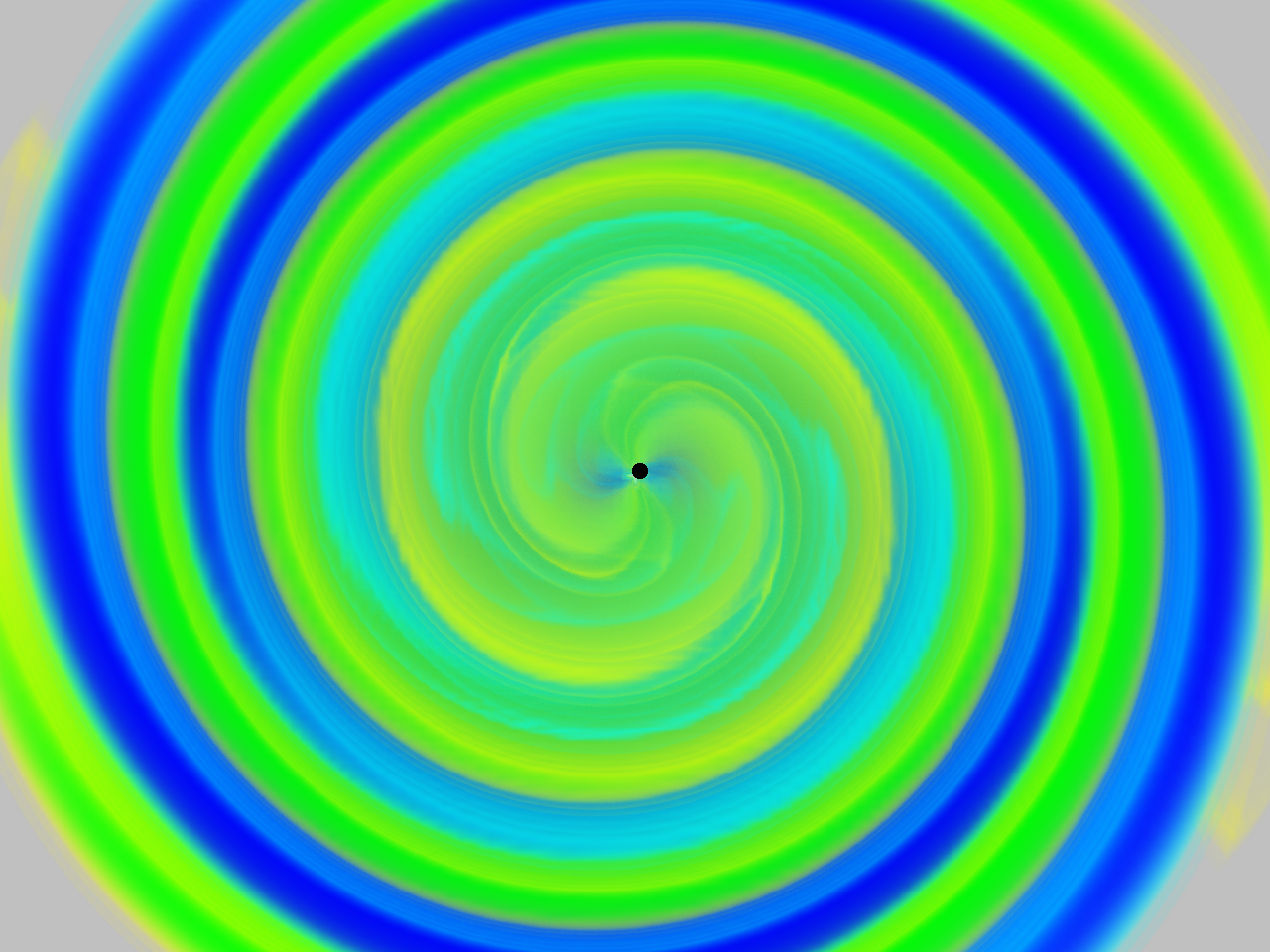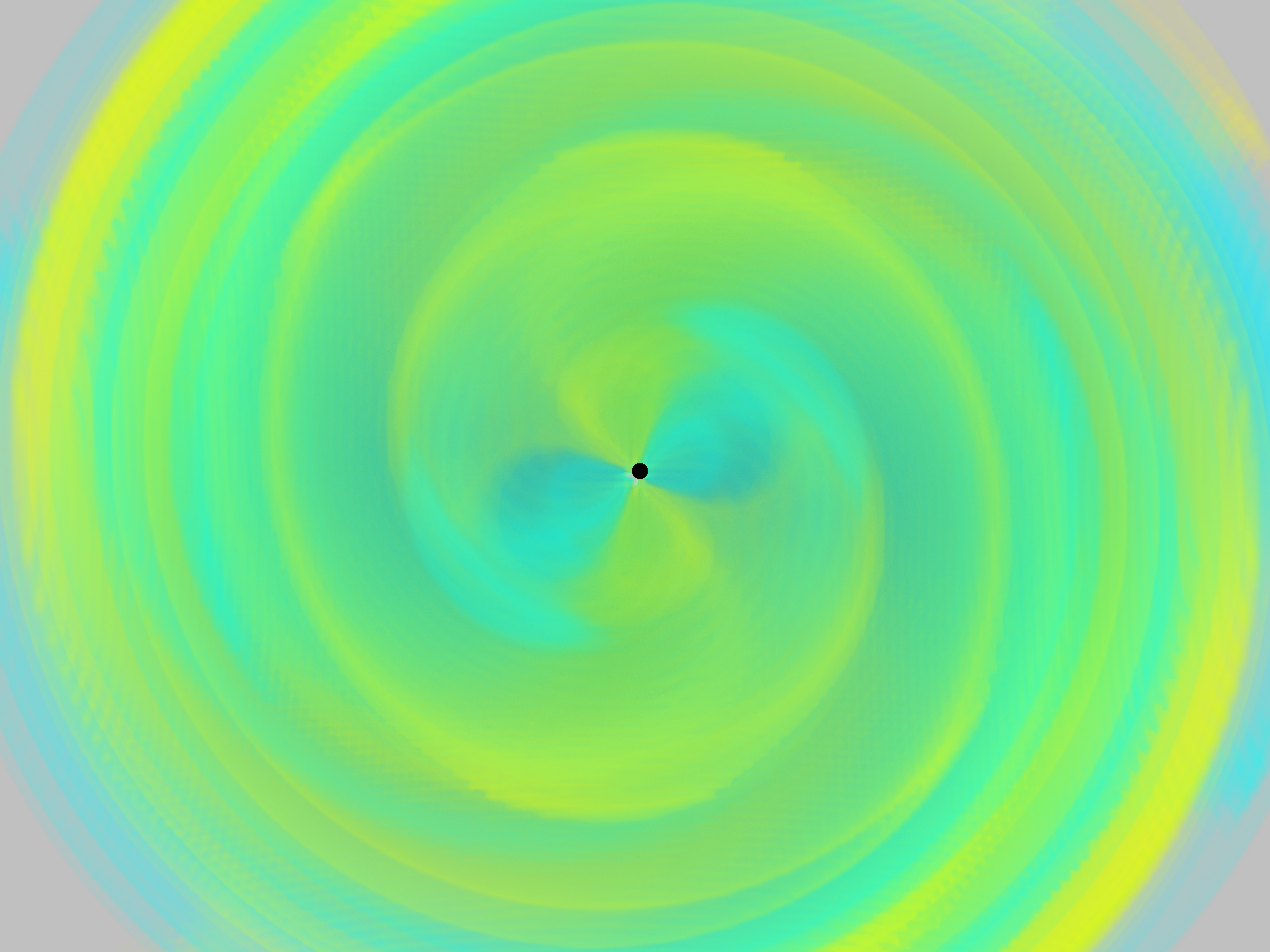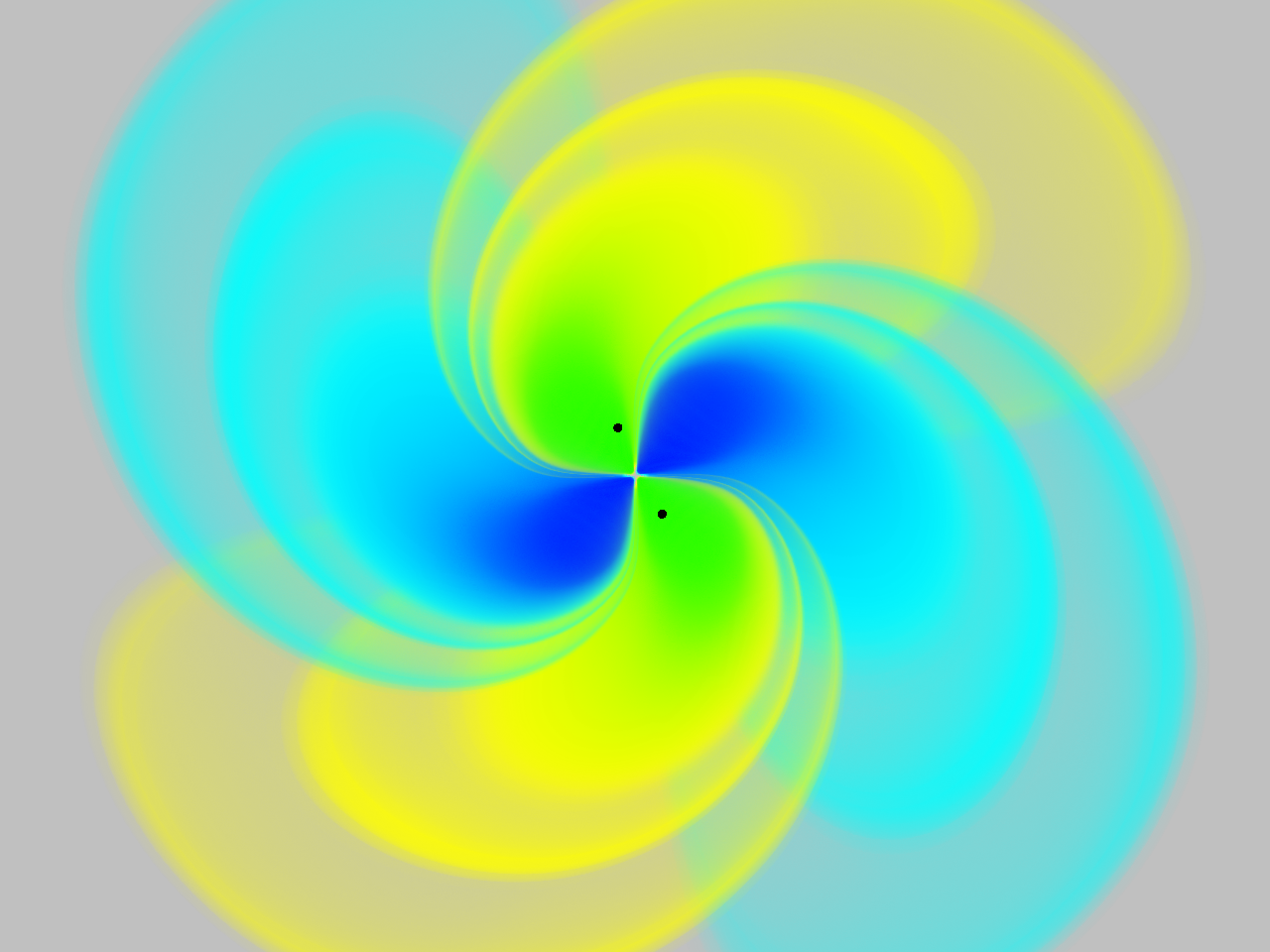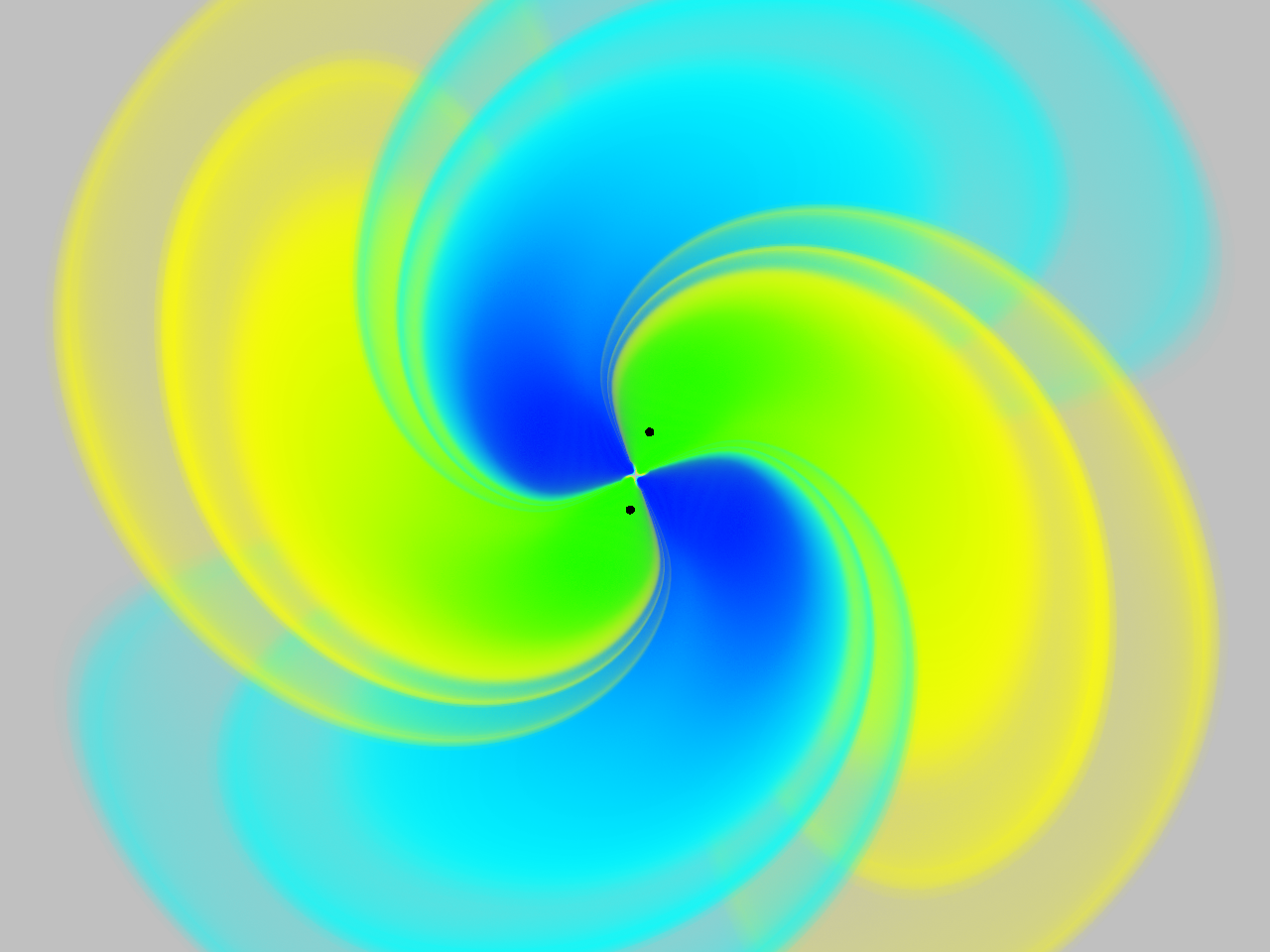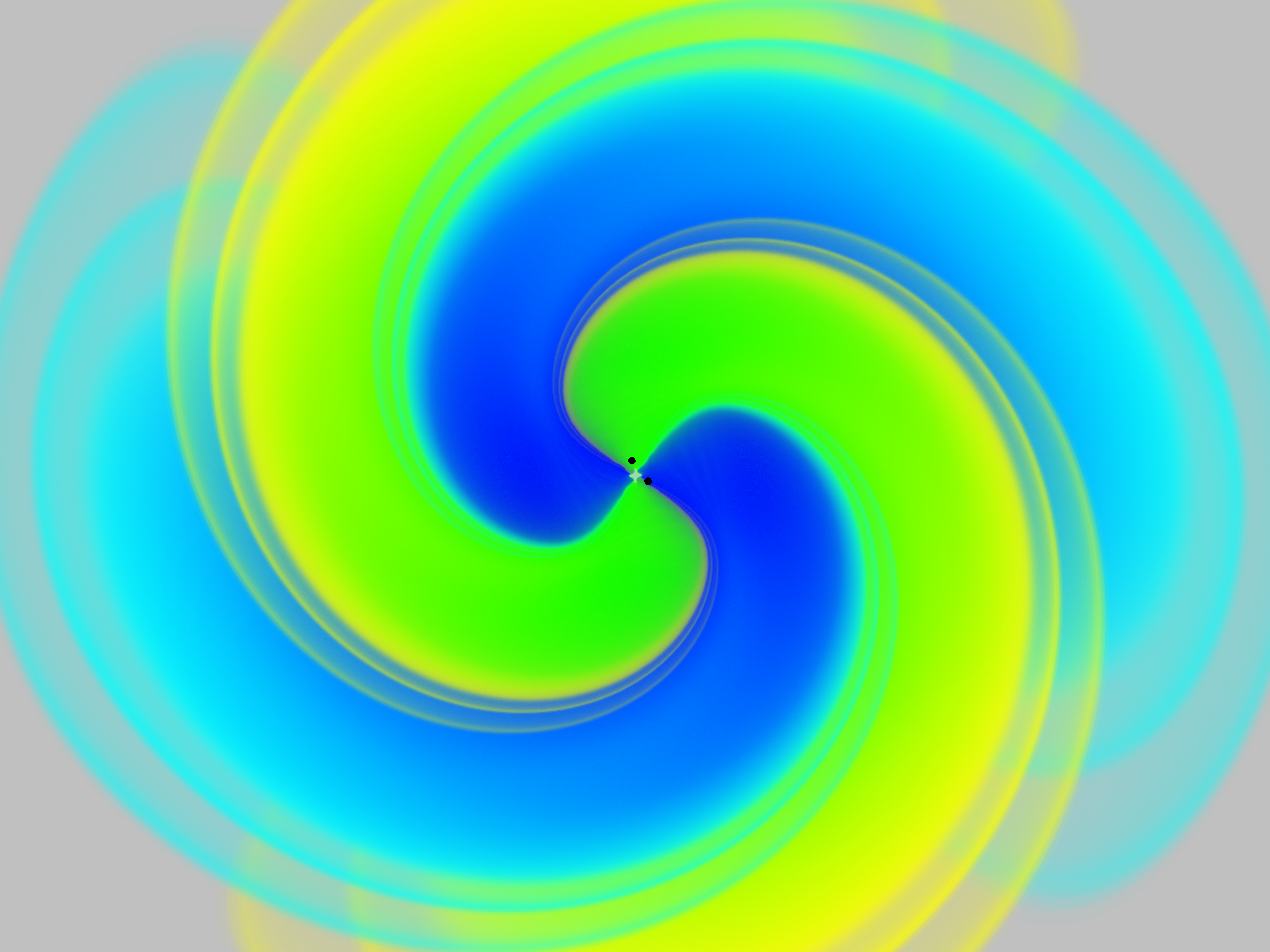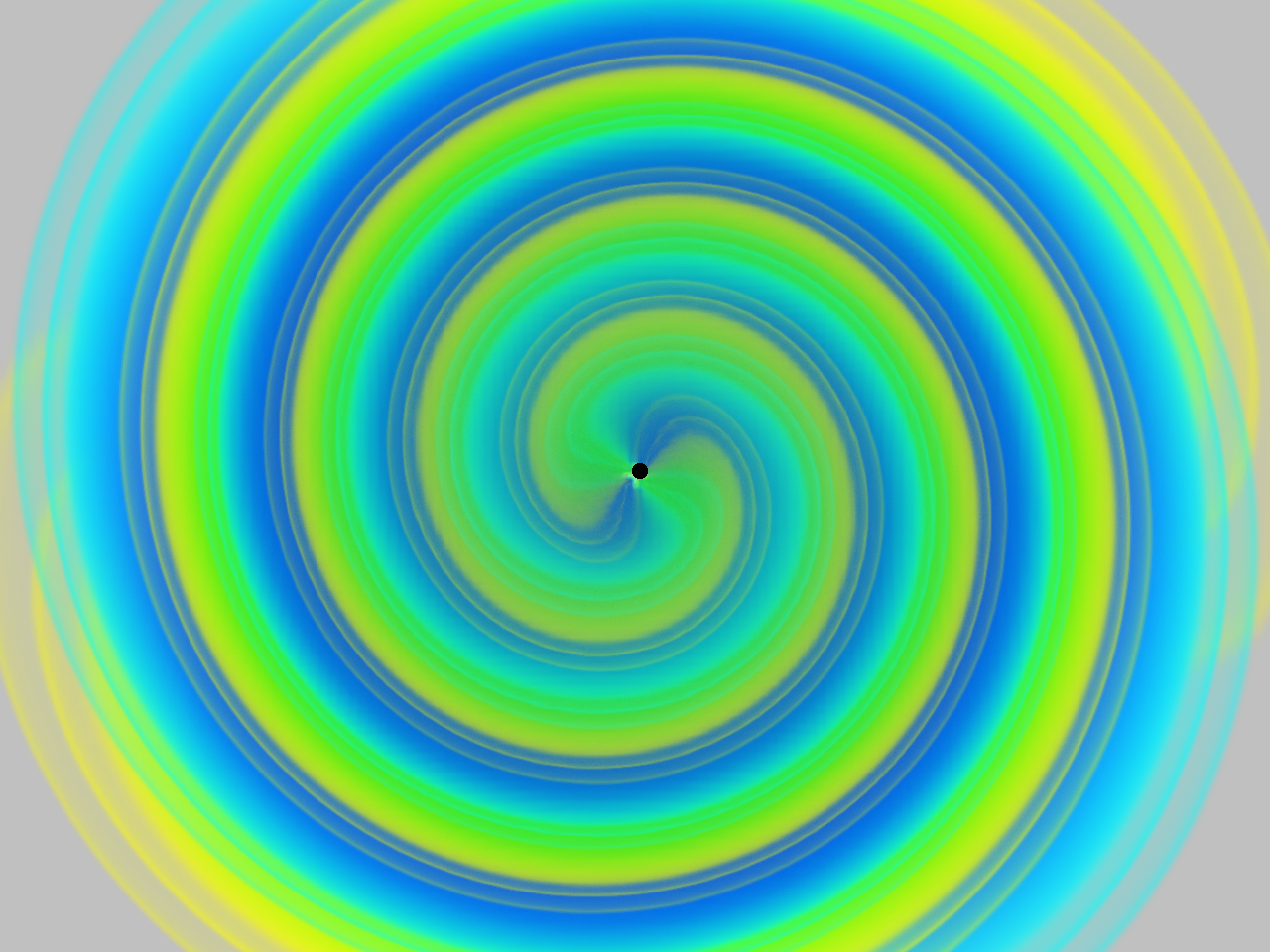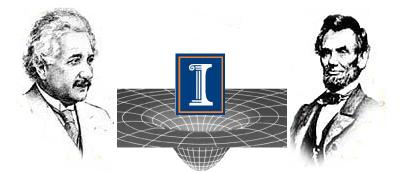Gravitational Waveforms

The gravitational wavetrain from a compact binary system may be separated into three qualitatively different phases: the inspiral, merger, and ringdown. During the inspiral phase, which takes up most of the binary's lifetime, gravity wave emission gradually reduces the binary separation. When the black holes get close enough, they merge into one black hole. Finally, ringdown radiation is emitted as the distorted black hole settles down to Kerr-like equilibrium (Note: Only in the case of a vacuum spacetime does the spinning BH obey the exact Kerr solution. The BHs formed here are surrounded by gaseous disks with small, but nonnegligible, rest mass). Both polarization modes (h+ and hx) are shown.
